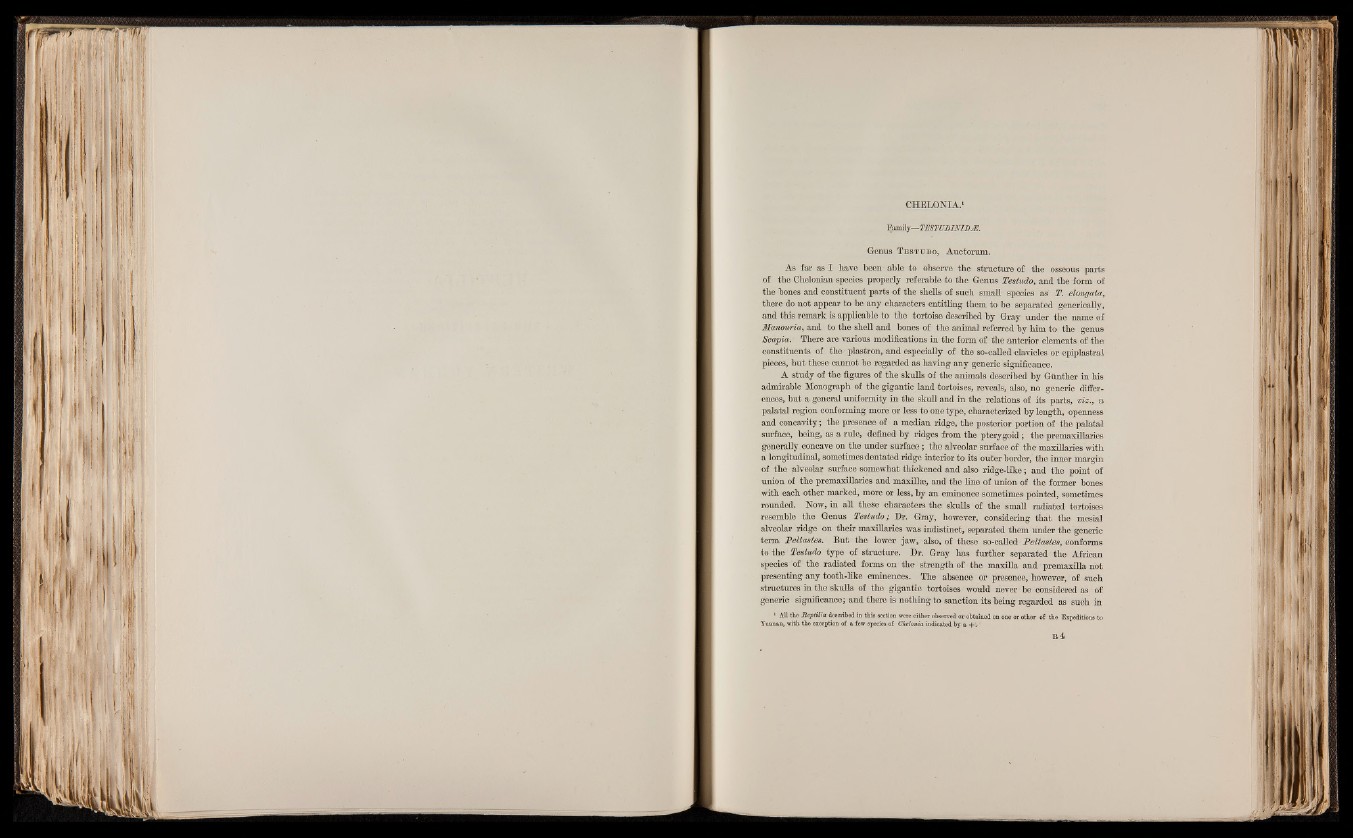
CHELONIA.1
Paxntiy— TESTUDINIDJS.
Genus T e s t u d o , Auctorum.
As far as I have been able to observe the structure of the osseous parts
of the Chelonian species properly referable to the Genus Testudo, and the form of
the hones and constituent parts of the shells of such small species as T. elongata,
there do not appear to be any characters entitling them to he separated generically,
and this remark is applicable to the tortoise described by Gray under the name of
Manouria, and to the shell and bones of the animal referred by him to the genus
Scapia. There are various modifications in the form of the anterior elements of the
constituents of the plastron, and especially of the so-called clavicles or epiplastral
pieces, but these cannot be regarded as having any generic significance.
A study of the figures of the skulls of the animals described by Gunther in his
admirable Monograph of the gigantic land tortoises, reveals, also, no generic differences,
but a general uniformity in the skull and in the relations of its parts, viz., a .
palatal region conforming more or less to one type, characterized by length, openness
and concavity; the presence of a median ridge, the posterior portion of the palatal
surface, being, as a rule, defined by ridges from the pterygoid; the premaxillaries
generally concave on the under surface; the alveolar surface of the maxillaries with
a longitudinal, sometimes dentated ridge interior to its outer border, the irmpr margin
of the alveolar surface somewhat thickened and also ridge-like; and the point of
union of the premaxillaries and maxillae, and the line of union of the former bones
with each other marked, more or less, by an eminence sometimes' pointed, sometimes
rounded. Now, in all these characters the skulls of the small radiated tortoises
resemble the Genus Testudo; Dr. Gray, however, considering that the mesial
alveolar ridge on their maxillaries was indistinct, separated them under the generic
term Peltastes. But the lower jaw, also, of these so-called Peltastes, conforms
to the Testudo type of structure. Dr. Gray has further separated the African
species of the radiated forms on the strength of the maxilla and premaxilla not
presenting any tooth-like eminences. The absence or presence, however, of such
structures in the skulls of the gigantic tortoises would never be considered as of
generic significance; and there is nothing to sanction its being regarded as such in
1 All the Beptilia described in this section were either observed or obtained on one or other of the Expeditions to
Yunnan, with the exception of a few species of Chelonia indicated by a +',
r 4